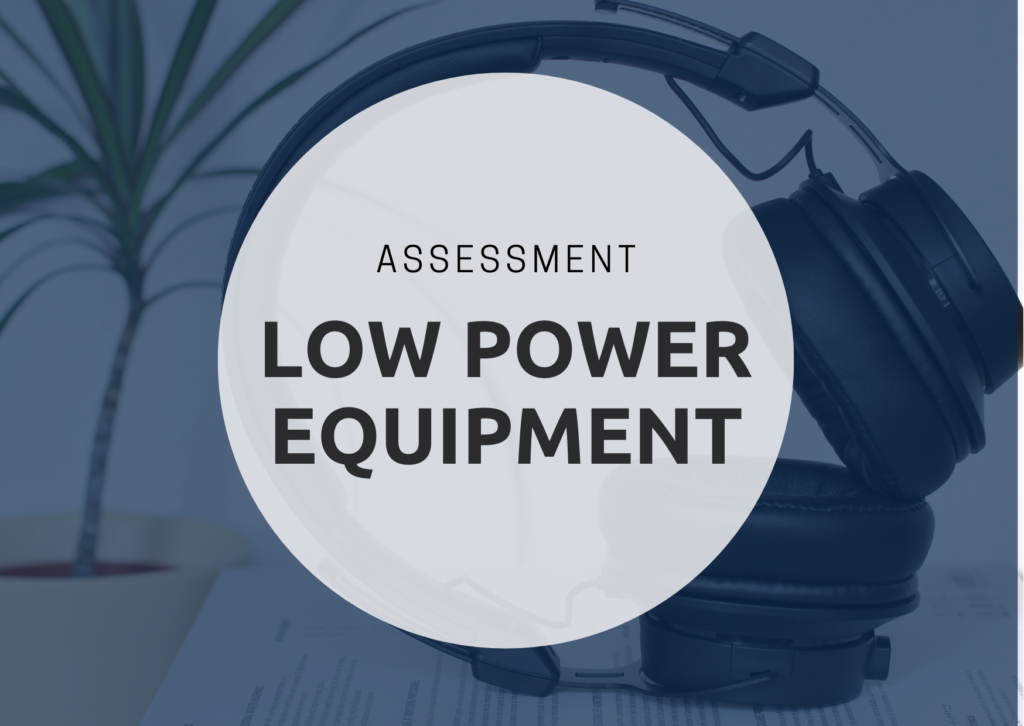All radio products need RF exposure assessment to make sure they are safe to use. This assessment can be done by RF exposure evaluations (assessment of low power equipment or power density calculations), EMF measurements, or SAR testing. If unsure what is the best way for you to show your devices RF exposure compliance, read our four ways to show RF exposure compliance -article.
Assessment of low power equipment is one way to show RF exposure compliance without any actual testing. Continue reading to find out when the assessment of low power equipment is a good way to show the RF exposure compliance.
Assessment of low power equipment
Assessment of low power equipment is one way to show RF exposure compliance by calculations. Assessment of low power equipment is possible to be performed on low power devices which maximum power levels (PMAX) are within certain limits.
Standard EN 50663 defines maximum power levels, called PMAX exclusion levels, for low power equipment. PMAX exclusion level means that if a device has lower or equal power levels as PMAX exclusion level, the RF exposure value of a device can be calculated instead of testing. Standard EN 50663 defines maximum power levels to be 20 mW over the 10 MHz to 300 GHz frequency range for the general public exposure.
Below you see the PMAX exclusion levels defined by EN 50663:

The standard EN 62479 defines the assessment methods for low-power electronic and electrical equipment.
Assessment of low power equipment -calculations
Assessment of low power equipment -calculations could also be called theoretical SAR (Specific Absorption Rate) calculations. This is because in the EU, the assessment of low-power equipment uses the same limits that are used in SAR testing. For head and body, in Europe, the limits are 2 W/kg measured from 10g tissue volume and for limb SAR exposure, the limit is 4 W/kg and measured from 10g tissue volume. The limits for US are presented in FCC’s 447498 D01 General RF Exposure Guidance v06 -document and for Canada in ISED’s RSS-102 document.
Assessment of low power equipment calculations are always conservative. They assume that all the power fed to the antenna or that all the power radiated by the antenna is absorbed to user’s body. Thus, if the calculated SAR value of the device is not within the SAR limits, it still may pass the actual SAR test.
How can I show that my device has lower or equal power as PMAX exclusion level (20 mW)?
There are four possible ways to show that your product’s power levels are within the required limits. The RF exposure can be calculated according to the EN 62479 standard if
- The device is inherently compliant with the applicable EMF exposure levels because of its physical characteristics, for example equipment that does not contain radio transmitters.
- The available antenna power and/or the average total radiated power do not exceed the low-power exclusion level because the input power level of the device in the relevant frequency range is so low.
- The available antenna power and/or the average total radiated power, limited by product standards for transmitters, is less than the low-power exclusion level.
- Calculations or measurements show that the available antenna power and/or the average total radiated power are less than the low-power exclusion level.
If it can be shown that a product’s power level is lower or equal to PMAX level, the RF exposure can be evaluated according to the standard EN 62479. In cases, where the product does not these requirements, the RF exposure evaluations must be performed according to other standards.
For example, the RF exposure compliance of Bluetooth headphones can typically be shown by assessment of low power equipment calculations.
Request More Info
If you need more information, Verkotan is always happy to provide more detailed information. We are always ready to make a proposal about how we can help you to verify the performance of your device in the global environment. Visit our Over-the-Air wireless performance testing and RF exposure testing service pages to find more information about our main services.
With our help, you can offer the best user experience for your customers.
Follow our social media channels to keep up with the latest news in the world of wireless technology.
If you have any questions or need assistance, contact us. We are happy to help you!
